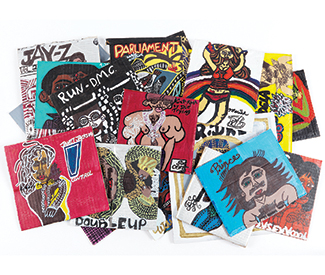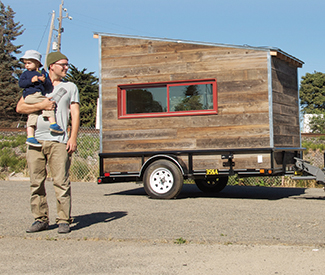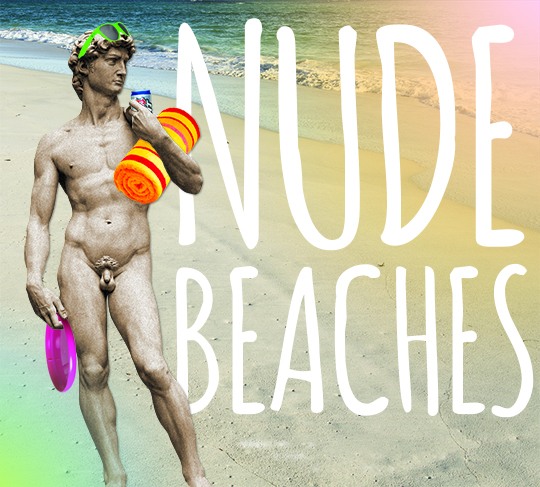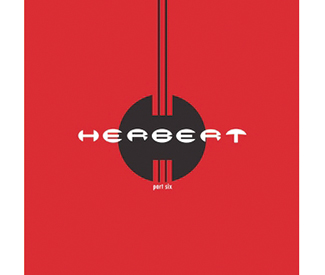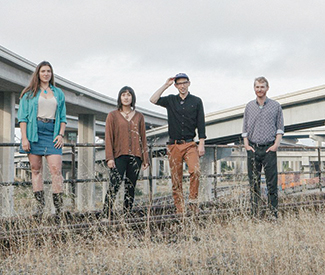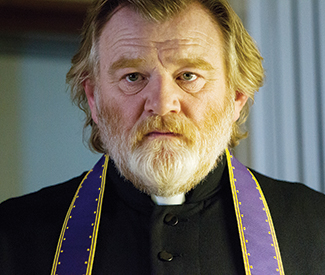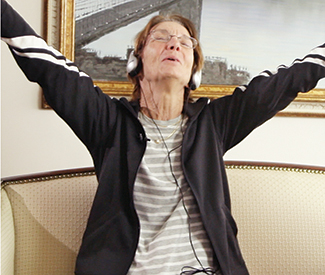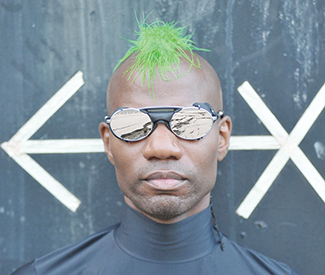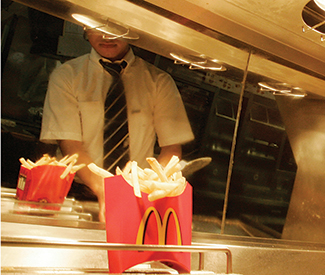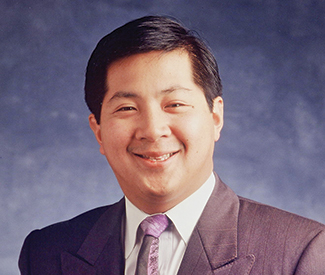culture@sfbg.com
NUDE BEACHES 2014 Well, it’s been 40 years since I turned over on my side and asked a totally naked woman at Red Rock nude beach, near Stinson Beach, if she knew of any other clothing-optional beaches in Northern California.
Don’t worry, she didn’t slap me. Jane and I were on our third date — we’d met at a bus stop in downtown Berkeley — which she had casually suggested take place at the beach. “Sure, where’d you like to go?” I asked. “How about Red Rock?” she replied. “Red Rock?” I asked. “I’ve never heard of it.” “It’s a nude beach,” responded Jane.
I didn’t want to sound like a wuss, so, I immediately agreed — and about an hour later, we were walking down a long, moderately steep trail that led us to a beautiful cove. When we arrived, I couldn’t believe what I saw: dozens of people clothed only in their birthday suits. They acted as if being stark naked was no big deal. And so did Jane. She threw down a towel, immediately stripped down, and asked if I would put some sun tan lotion on her back.
It was a beautiful summer day. People were enjoying themselves. Some were reading, while others were sunning, walking, wading in the chilly but invigorating surf, playing Frisbee, or socializing with friends. Pretty soon, I took off my swimsuit too. Around 30 minutes later, when my eyeballs began to recede back into their sockets, I started wondering how many other nude beaches were in the Bay Area. Jane knew of a half dozen and suggested I speak with her roommates. “They probably know about four or five more,” she said.
And that’s how the annual Bay Guardian Nude Beach Guide was born. From covering a dozen or so beaches, lakes, ponds, skinny-dipping holes, and other clothing-optional spots in 1975, we’ve soared to 130 today, when you include our complete online listings. They include places where you can camp nude (North Garberville, in Humboldt County), take off your clothes at a waterfall (Alamere Falls, near Bolinas), soak in hot springs (Sykes, near Big Sur, and Steep Ravine, in Marin County), play bare-bottom volleyball (San Francisco’s North Baker Beach), or sunbathe naked at a state park (Gray Whale Cove, in San Mateo County).
Who knows, maybe someday we’ll be able to get everything from sundaes to massages on a nude beach, like those offered at sprawling Haulover Nude Beach, just north of Miami, Fla., which I checked out in June. It draws up to 7,000 visitors a day. The site is part of a park that also has a non-nude beach and even a separate dog play area.
In the meantime, we’ve got plenty of clothing-optional recreation choices right here, especially with the reopening of the nude section of Muir Beach, which, along with the main part of the beach, was closed most of last summer and part of the fall. Want to hike naked through the East Bay hills, guided by a member of the Bay Area Naturists group? America’s only “Full Moon Hikes” will continue this season with a walk starting in Castro Valley on Aug. 10 (see our listing below for Las Trampas under Contra Costa County for details). In Lake Tahoe, at Secret Harbor Creek Beach (also in the Internet version of our guide), you can take part in an “only wear a hat” day Aug. 17. And on Sept. 20, fans of Santa Cruz’s popular Bonny Doon Beach will be getting together to help remove trash from the sand.
Speaking of help, to help beachgoers and naturists, please send me your new beach discoveries, trip reports, and improved directions (especially road milepost numbers), along with your phone number to garhan@aol.com or Gary Hanauer, c/o San Francisco Bay Guardian, 835 Market, Suite 550, San Francisco, CA 94103.
Our ratings: “A” stands for a beach that is large or well-established and where the crowd is mostly nude; “B” signifies a spot where fewer than half the visitors are nude; “C” indicates a small or emerging nude area; and “D” depicts places that are in use, but not recommended.
SAN FRANCISCO
NORTH BAKER BEACH, SAN FRANCISCO
RATING: A
Complete with nude volleyball that’s open to anyone, driftwood “art trees” (last year’s was called Sea Hag), and occasional live music performed by beachgoers — mostly guitar and drums — almost anything goes on the north end of Baker, where the atmosphere is playful and increasingly social. Over the winter, storms washed away a chunk of the sand (which is starting to return) and all the wooden objects. But Baker’s regular visitors, led by the local street fair organizer who prefers to be called Santosh, have erected a new tree. If you join in a game on the sand, don’t expect the rules to necessarily be the same ones you followed as a kid. For example, it’s considered fair and in play if a ball touches one of the site’s driftwood poles. Of course, you don’t need to do anything at Baker — it’s a great place to relax and be yourself. Or you could go exploring! For a treat, wait until low tide and try finding the beach’s “secret” tidepools by walking around the big rocks at the far north side of the beach. One thing that’s not tolerated at Baker: gawkers. “People let them know we don’t like it,” says Santosh. “We want to keep things mellow.”
Directions: Take the 29 Sunset bus or go north on 25th Avenue to Lincoln Boulevard. Turn right and take the second left onto Bowley Street. Follow Bowley to Gibson Road, turn right, and follow Gibson to the east parking lot. At the beach, head right to the nude area, which starts at the brown and yellow “Hazardous surf, undertow, swim at your own risk” sign. Some motorcycles in the lot have been vandalized, possibly by car owners angered by bikers parking in car spaces; to avoid trouble, motorcyclists should park in the motorcycle area near the cyclone fence. Parking at Lincoln’s 100 or more nearby parking spaces is limited to two hours.
LANDS END BEACH, SAN FRANCISCO
RATING: A
Want to star in your own picture-perfect postcard? Lands End’s lovely vistas are just the start of an outing you may wish to call Swim Suit’s End. Law enforcers seldom visit the cove off Geary Boulevard, where some visitors doff their togs, often to the surprise of tourists who walk down the beach path, hoping for some good photo opportunities. The site is super small, so on summer weekends, try to stake out a claim to some towel space by late morning. For the best sand, use one of the unoccupied rock-lined windbreaks traditionally made by previous visitors or look for a dab of soft soil further away from the beach entrance. Bring a sweatshirt for sudden fog or wind.
Directions: Follow Geary Boulevard to the end, then park in the dirt lot up the road from the Cliff House. Take the trail at the far end of the lot. About 100 yards past a bench and some trash cans, the path narrows and bends, then rises and falls, eventually becoming the width of a road. Don’t take the road to the right, which leads to a golf course. Just past another bench, as the trail turns right, go left toward a group of dead trees where you will see a stairway and a “Dogs must be leashed” sign. Descend and head left to another stairway, which leads to a 100-foot walk to the cove. Or, instead, take the service road below the El Camino del Mar parking lot 1/4 mile until you reach a bench, then follow the trail there. It’s eroded in a few places. At the end, you’ll have to scramble over some rocks. Turn left (west) and walk until you find a good place to put down your towel.
GOLDEN GATE BRIDGE BEACH, SAN FRANCISCO
RATING: A
On hot summer days, Golden Gate Bridge Beach’s mix of rocks and sand swarms with dozens or even hundreds of gay males. You can also find others here too, either sunbathing or enjoying dips in the usually cold surf. If you’re brave enough to swim here, please use caution: the area’s known for its riptides. Three side-by-side coves line the somewhat rocky shoreline, so if you want to do a little exploring, feel free. And don’t forget to look up and soak in a view of the glistening edifice for which the beach is named.
Directions: From the toll booth area of Highway 101/1, take Lincoln Boulevard west about a half mile to Langdon Court. Turn right (west) on Langdon and look for space in the parking lots, across Lincoln from Fort Winfield Scott. Park and then take the beach trail, starting just west of the end of Langdon, down its more than 200 steps to Golden Gate Bridge Beach, also known as Marshall’s Beach. Despite recent improvements, the trail to the beach can still be slippery, especially in the spring and winter.
FORT FUNSTON BEACH, SAN FRANCISCO
RATING: C
Barely a bare beach, we include “Fort Fun,” as some naturists call it, in our listings because a few diehard suitless sunbathers can occasionally be found on the shore, hidden between some of the dunes. You’ll likely be busted or given a warning, though, if a ranger spots your naked body or if somebody uses their cell phone to call in a complaint. Weekdays are the best times to avoid hassles from authorities, but you should still be prepared to suit up fast. Did we mention the dogs? If you like them, then be prepared for a nice bonus: The cliffs above the beach attract a never-ending parade of pooches and their human companions.
Directions: From San Francisco, go west to Ocean Beach, then south on the Great Highway. After Sloat Boulevard, the road heads uphill. From there, curve right onto Skyline Boulevard, go past one stoplight, and look for signs for Funston on the right. Turn into the public lot and find a space near the west side. At the southwest end, take the sandy steps to the beach, turn right, and walk to the dunes. Find a spot as far as possible from the parking lot.
CONTRA COSTA COUNTY
LAS TRAMPAS REGIONAL WILDERNESS, CASTRO VALLEY
RATING: C
Have you ever been on a naked hike — at night? Now’s your chance to sign something off your Bucket List that you probably never knew should be on it: taking a guided walk by the light of the silvery moon — and your flashlight — along a somewhat challenging, but, participants say, “doable” East Bay ridge just after sunset and then returning for a dip in the hot tub of the Sequoians Naturist Club, in Castro Valley. These “Full Moon Hikes” usually take place in July, August, and September (next one is Aug. 10) with a potluck held at the club before Dave Smith, of the Bay Area Naturists group, takes fully clothed walkers up a trail just as darkness begins to fall. When the moon rises, the hikers come back down the path — usually naked, with their duds stored in their backpacks, after what some trekkers describe as an epic, almost spiritual adventure.
Directions: Contact the Sequoians (www.sequoians.com) or the Bay Area Naturists (www.bayareanaturists.org) for details on how to join a walk. Meet at the Sequoians. To get there, take Highway 580 east to the Crow Canyon Road exit. Or follow 580 west to the first Castro Valley off-ramp. Take Crow Canyon Road toward San Ramon 0.75 mile to Cull Canyon Road. Then follow Cull Canyon Road around 6.5 miles to the end of the paved road. Take the dirt road on the right until the “Y” in the road and keep left. Shortly after, you’ll see The Sequoians sign. Proceed ahead for about another 0.75 mile to The Sequoians front gate.
SAN MATEO COUNTY
DEVIL’S SLIDE, MONTARA
RATING: A
A state park that tolerates nude sunbathing? It’s not officially designated that way, but officials in charge of Gray Whale Cove remain steadfast in their toleration of nudies, some of whom have been coming here for decades, as long as complaints are not received. Even if phoned-in objections were received, it’s doubtful whether rangers, who are seldom present, could reach the sand in time to catch an offender. Over the last few years, GWC, more commonly known as Devil’s Slide, has been attracting so many visitors to its 100-yard long seashore that park staff recently added a second parking lot. But only one in every two or three dozen people go nude on the north end of the stunning shoreline, which draws tourists from around the world. You’ll usually find plenty of space here, even on a hot summer day.
Directions: Driving from San Francisco, take Highway 1 south through Pacifica. Three miles south of the Denny’s restaurant in Linda Mar, at 500 Linda Mar Blvd., Pacifica, and just past and south of the Tom Lantos Tunnels, turn left (inland or east) on an unmarked road, which takes you to the beach’s parking lots on the east and west sides of the highway and to a 146-step staircase that leads to the sand. Coming from the south on Highway 1, look for a road on the right (east), 1.2 miles north of the old Chart House restaurant in Montara. Most naturists use the north end of the beach, which is separated by rocks from the rest of the shore. Wait until low tide to make the crossing to the nude area. Otherwise, you may face waves crashing against you, which could cause you to slip and lose your footing.
SAN GREGORIO NUDE BEACH, SAN GREGORIO
RATING: A
Nearly 50 years old, the USA’s longest-operating clothing optional beach is located next to, but remains distinctly different from San Gregorio State Beach. For a view of conditions, check out its web cam at www.freewebs.com/sangregoriobeach. Skinny-dippers started flocking here by 1966 after a “Committee For Free Beaches” was formed by a San Francisco State College student who, along with a few pals, distributed fliers at colleges in the San Francisco Bay Area announcing the start of a “free beach,” as they called it. Soon, up to 500 persons were showing up on the sand on weekends. A court case to try to stop the venture failed, but that hasn’t stopped the private operation from remaining controversial. The main rub: Not everyone likes the driftwood structures on the slope leading down to the beach (a T-shirt hanging from a pole means the site is occupied), where open sex often occurs. Catering to mostly gay visitors, both nude and nonnude straight couples, singles, and families also visit the huge beach.
Directions: From San Francisco, drive south on Highway 1, past Half Moon Bay, and, between mileposts 18 and 19, look on the right side of the road for telephone call box number SM 001 0195, at the intersection of Highway 1 and Stage Road, and near an iron gate with trees on either side. From there, expect a drive of 1.1 miles to the entrance. At the Junction 84 highway sign, the beach’s driveway is just .1 mile away. Turn into a gravel driveway, passing through the iron gate mentioned above, which says 119429 on the gatepost. Drive past a grassy field to the parking lot, where you’ll be asked to pay an entrance fee. Take the long path from the lot to the sand; everything north of the trail’s end is clothing-optional (families and swimsuit-using visitors tend to stay on the south end of the beach). The beach is also accessible from the San Gregorio State Beach parking area to the south; from there, hike about a half-mile north. Take the dirt road past the big white gate with the Toll Road sign to the parking lot.
SANTA CRUZ COUNTY
GARDEN OF EDEN, FELTON
RATING: C
Nude spelled backwards is Edun, so it’s little wonder that California’s Garden of Eden would attract scads of clothing-optional users. It’s located on the San Lorenzo River between San Jose and Santa Cruz. Nudity is technically illegal in Henry Cowell Redwoods State Park, where this creekside skinnydipper’s delight is nestled. Not everyone likes the nudists, who often shock the many swimsuit-wearing visitors who like to take a dip here on hot days. Other bummers include slippery, poison oak-lined trails and surprise visits by rangers. To discover your own personal Eden and several other nude swimming holes, as you drive north along Highway 9 near Fulton look for cars pulled over on the side of the road. Directions: From Santa Cruz, drive north on Highway 9 and look for turnouts on the right side of the road, where cars are pulled over. The first, a wide turnout with a tree in the middle, is just north of Santa Cruz. Rincon Fire Trail starts about where the tree is, according to reader Robert Carlsen, of Sacramento. The many forks in the trail all lead to the river, down toward Big Rock Hole and Frisbee Beach; Carlsen says the best area off this turnout can be reached by bearing left until the end of the trail. Farther up the highway, 1.3 miles south of the park entrance, is the second and bigger pullout, called the Ox Trail Turnout, leading to Garden of Eden. Park in the turnout and follow the dirt fire road downhill and across some railroad tracks. Head south, following the tracks, for around 0.5 miles. Look for a “Pack Your Trash” sign with park rules and hours and then proceed down the Eden Trail. Or, about three miles south of the park entrance, look for a dirt parking lot, park there, and take the path from there to some beaches that attract fewer people than the Garden.
BONNY DOON NUDE BEACH, BONNY DOON
RATING: A
Fans of this beautiful cove were pleased to learn last year that state officials plan to allow nudity, unless there are complaints, to continue on the north end of the beach, despite warning signs that were erected but taken down just a few weeks later. A big rock separates the clothing-optional side of the shore from the area traditionally used by families and other clothed visitors to the south. While some visitors joke on social media message boards about the increase in gray-haired beachgoers on the sand (a Redwood City woman recently told Yelp the beach needs “some hot dudes” and a female from San Jose compared the women there to those on the “Golden Girls” tv show), others have posted more serious remarks about the gawkers and rude males who occasionally show up. Most visitors, though, relish the tranquil, almost idyllic atmosphere they encounter. Directions: From San Francisco, go south on Highway 1 to the Bonny Doon parking lot at milepost 27.6 on the west side of the road, 2.4 miles north of Red, White, and Blue Beach, and some 11 miles north of Santa Cruz. From Santa Cruz, head north on Highway 1 until you see Bonny Doon Road, which veers off sharply to the right just south of Davenport. The beach is just off the intersection. Park in the paved lot to the west of Highway 1; don’t park on Bonny Doon Road or the shoulder of Highway 1. If the lot is full, drive north on Highway 1, park at the next beach lot, and walk back to the first lot. Or take Santa Cruz Metro Transit District bus route 40 to the lot; it leaves the Metro Center three times a day on Saturdays and takes about 20 minutes. To get to the beach, climb the berm next to the railroad tracks adjacent to the Bonny Doon lot, cross the tracks, descend, and take a recently improved, sign-marked trail to the sand. Walk north past most of the beach to the nude cove on the north end. Alternately, Dusty suggests parking as far north as possible, taking the northern entrance, and, with good shoes, following a “rocky and steep” — and less desirable — walk down to the sand. It can be slippery, so wear good shoes.
PANTHER BEACH, SANTA CRUZ
RATING: B
“This is my all time favorite spot,” reported a Redwood City resident after a visit this April. This “is (also) a nude beach,” added Taylen, on Yelp, who’s even seen naked people fishing at this modestly sized but gorgeous beach, some 10 miles north of Santa Cruz. Bring a beach umbrella, a windbreaker in case the weather changes, and sturdy walking shoes for the path to the sand. Pick from such activities as reading, sunbathing, rock climbing, swimming, exploring the shore, picnicking, birding, whale watching, or doing absolutely nothing at all.
Directions: Panther Beach is between mileposts 26.86 and 26.4 on Highway 1, some 10.6 miles north of the junction of Highway 1 and 17 in Santa Cruz and 40.7 miles south of the intersection of Highways 1 and 92 in Half Moon Bay. Drive slowly so you can make a sharp right turn onto a small dirt road on the west side of the highway, which is difficult to see when approaching from the north. The road leads to a rutted parking area that lies on a ridge between the highway and some railroad tracks. From the north end of the lot, cross the tracks and, while watching for poison oak, follow the steep, sloping, somewhat crumbly path about five minutes to the sand. Visitors this season suggest holding onto rocks or ledges along the trail’s more slippery spots for extra support.
2222 BEACH, SANTA CRUZ
RATING: A
Delightful but difficult to reach, 2222 takes its name from the address of the nearest house on West Cliff Drive, just north of Santa Cruz’s popular wharf and Boardwalk areas. It’s also one of the smallest clothing-optional beaches. You’ll be lucky to encounter more than a half dozen persons in the cove — often you’ll be alone — which mainly attracts nearby residents and local college students. A bonus is that walkers on the road above can’t see the beach from there. Yup, a visit here is like having your own private nude beach, unless you count the juggler who likes to practice on the sand. But the beach path is only suitable for people who are agile enough to handle a scary-looking, very steep slope. Leave children and anything that doesn’t fit in a backpack at home.
Directions: The beach is a few blocks west of Natural Bridges State Beach and about 2.5 miles north of the Santa Cruz Boardwalk. From either north or south of Santa Cruz, take Highway 1 to Swift Street. Drive .8 miles to the sea, then turn right on West Cliff Drive. 2222 is five blocks away. Past Auburn Avenue, look for 2222 West Cliff on the inland side of the street. Park in the pullout with eight parking spaces next to the cliff, on the west side of the road. If it’s full, continue straight and park along Chico Avenue. Bay Area Naturists leader Rich Pasco suggests visitors use care and then follow the path on the side of the beach closest to downtown Santa Cruz and the Municipal Wharf.
PRIVATES BEACH, SANTA CRUZ
RATING: A
One of Northern California’s best nude beaches, Privates (yes that’s the name) gets almost a unanimous thumbs up from visitors for its clean sand, shelter from the wind, and friendly vibes. New this year: During the summer, the gate to the beach is only open until 7 or 8pm. And dogs are no longer always allowed: They’re banned on weekends 10am-5pm and must always be leashed. Most users pay a fee of $50–$100 (depending on if you live in the neighborhood) to buy a gate key that allows entrance, past a security guard at the top of the beach stairs, through May 31. But we list three ways to go for free below under “Directions.” Nudists, families, and local residents love the cove, which is divided into two parts — clad and unclad. Surfers, in particular, can be found by the dozens on the sand or paddling out. Want to play nude Frisbee? At the end of the staircase to the sand, turn left and keep walking until you come to the clothing-optional area.
Directions: 1) Some visitors walk north from Capitola Pier in low tide (not a good idea since at least four people have needed to be rescued). 2) Others reach it in low tide via the stairs at the end of 41st Avenue, which lead to a surf spot called the Hook at the south end of a rocky shore known as Pleasure Point. 3) Surfers paddle on boards for a few minutes to Privates from Capitola or the Hook. 4) Most visitors buy a key to the beach gate for $100 a year at Freeline (821 41st Ave., Santa Cruz, 831-476-2950) 1.5 blocks west of the beach. Others go with someone with a key or wait outside the gate until a person with a key goes in, provided a security guard is not present (they often are there). “Most people will gladly hold the gate open for someone behind them whose hands are full,” says Bay Area Naturists leader Rich Pasco. The nude zone starts to the left of the bottom of the stairs.
MARIN COUNTY
BASS LAKE, BOLINAS
RATING: B
Although it is not visited by as many nudists as a decade ago, skinny-dippers still inspire some visitors in what’s usually a mostly clothed crowd to join in the fun at Bass Lake, which true to its name, has lots of bass. Natalie, of San Francisco, described a day here as “unreal” on Yelp last summer. “The hike is super mellow.” She brought floaters, but found others left in the water. Another summer visitor, Julia, borrowed floaties from some women at the site. “It was so relaxing,” she says. San Leandro’s Dave Smith, who usually even walks naked to the lake — expect a nearly hourlong, fairly easy, 2.8 mile hike — says he “loves” spending time in Bass’ clear, refreshing waters. Rangers once halted and ticketed a clad man who had an unleashed dog, but let a group of nude walkers continue. On hot days the trailhead’s parking lot fills quickly, so come early — by 9:30 a.m., according to Steve, of Newark, who used the trail this June, or possibly as late as 10:30 a.m., reported by another June visitor, Addi, of El Cerrito.
Directions: Allow about an hour for the drive from San Francisco’s Golden Gate Bridge. From Stinson Beach, go north on Highway 1. Just north of Bolinas Lagoon, turn left on the often-unmarked exit to Bolinas. Follow the road as it curves along the lagoon and eventually ends at Olema-Bolinas Road. Continue along Olema-Bolinas Road to the stop sign at Mesa Road. Turn right on Mesa and drive four miles until it becomes a gravel road and ends at the Palomarin parking lot. Arrive as early as possible. Says Smith: “We once saw hundreds of cars.” A sign at the trailhead next to the lot will guide you down scenic Palomarin Trail to the lake. For directions to incredibly beautiful Alamere Falls, 1.5 miles past Bass Lake, which empties onto a beach at the sea, please see “Elsewhere In Marin” in our online listings.
RED ROCK BEACH, STINSTON BEACH
RATING: A
The Bay Area’s most popular nude beach is in good shape this year. “It’s in great condition,” says frequent visitor Fred Jaggi. “Winter storms didn’t knock down the terraces (above the beach). And the sand is really nice this season.” Warmer than usual weather has been sending crowds of up to 100 persons to the picturesque cove, up from 80 last year, but about the same number as 2012. If you arrive too late in the day to find space on the sand, try visiting on a Monday to join a small group of regular visitors for what they call “Club Day.” If possible, bring a folding beach chair. Save about 10-15 minutes to take a moderately steep but three-to-five-foot-wide trail to the beach, which is usually kept in great shape by volunteers. Even so, the last few feet of the path may sometimes be a bit slippery.
Directions: Go north on Highway 1 from Mill Valley, following the signs to Stinson Beach. At the long line of mailboxes next to the Muir Beach cutoff point, start checking your odometer. Look for a dirt lot full of cars to the left (west) of the highway 5.6 miles north of Muir and a smaller one on east side of the road. The lots are at milepost 11.3, one mile south of Stinson Beach. Limited parking is also available 150 yards to the south on the west side of Highway 1. Or from Mill Valley, take the West Marin/Bolinas Stage toward Stinson Beach and Bolinas. Get off at the intersection of Panoramic Highway and Highway 1. Then walk south 0.6 mile to the Red Rock lots. Take the path to the beach that starts near the Dumpster next to the main parking lot.
MUIR NUDE BEACH, MUIR BEACH
RATING: A
After being closed to the public most of last summer and fall, Muir Beach has reopened with improvements galore, including a relocated parking lot (it’s now parallel with the beach road, called Pacific Way), new restrooms, and a new, 400-foot long walkway to the sand. Most important of all, access to the gorgeous, clothing-optional cove just north of the main beach has also been reopened. “The walk takes a little longer,” says recent visitor Michael Velkoff, of Lucas Valley. “But the beach was fine.” Known for its peace and quiet, Muir is a less social beach than nearby Red Rock. It’s also less crowded (even on warm summer days, you’re more apt to see 30-40 people instead of hundreds) and far easier to reach, without any trail to take or any poison oak to ruin your day: You park at the main Muir lot, walk north along the water, cross over some rocks (in very low tide, try to cross closer to the water), and you’re there. Women, in particular, seem to like the vibes of Muir, which attracts fewer gawkers — often none — than most sites.
Directions: From San Francisco, take Highway 1 north to Muir Beach, to milepost 5.7. Turn left on Pacific Way and park in the Muir lot (to avoid tickets, don’t park on Pacific, even if other vehicles are parked there). Or park on the street off Highway 1 across from Pacific and about 100 yards north. From the Muir lot, follow a path and boardwalk to the sand. Then walk north to a pile of rocks between the cliffs and the sea. You’ll need good hiking or walking shoes to cross; in very low tide, try to cross closer to the water. The nude area starts north of it.
RCA BEACH, BOLINAS
RATING: A
Are you looking for a place to restore your sanity and recharge you from the stress of everyday life? Then you may want to visit RCA Beach, which is never crowded and averages just 5-20 visitors per day. Plus they’re usually spread out along the milelong shoreline, which gives the site an almost deserted feeling. “It’s a quiet place,” says one regular user. “And most people there are nude.” The site is somewhat exposed, so some regulars usually look for sunbathing nooks that are a little protected from the wind or even build windbreaks from driftwood they find on the sand. There are two beach trails from which to pick: one that’s long and steep or a shorter path that’s less steep but crumbling and slippery.
Directions: From Stinson Beach, take Highway 1 (Shoreline Highway) north toward Calle Del Mar for 4.5 miles. Turn left onto Olema Bolinas Road and follow it 1.8 miles to Mesa Road in Bolinas. Turn right and stay on Mesa until you see cars parked past some old transmission towers. Park and walk 0.25 miles to the end of the pavement. Go left through the gap in the fence. The trail leads to a gravel road. Follow it until you see a path on your right, leading through a gate. Take it along the cliff top until it veers down to the beach. Or continue along Mesa until you come to a grove of eucalyptus trees. Enter through the gate here, then hike 0.5 miles through a cow pasture on a path that will also bring you through thick brush. The second route is slippery and eroding, but less steep. “It’s shorter, but toward the end there’s a rope for you to hold onto going down the cliff,” tells the veteran visitor.
LIMANTOUR BEACH, OLEMA
RATING: B
Want to know a secret about Point Reyes National Seashore? Rangers usually won’t issue citations for nude sunbathing unless you’re close to a clothed visitor or someone complains. “You shouldn’t rip your clothes off right after you’ve left your car and then walk nude through a picnic area on the way to the beach,” former Point Reyes district Ranger Marc Yeston told us. “Usually, nobody hassles you,” says Marin County resident Michael Velkoff. “I knew it was going to be hot, so I went to Limantour. It’s a really mellow place. I just love the open space.” The more than two miles of shoreline are perfect for walking, birding, or whale and seal-watching. Dogs are okay on the south end of the beach. Naturists suggest walking at least 10 minutes away from the parking lot and more than 300 feet away from fellow beachgoers before even considering disrobing. Others prefer the sand dunes on the north side.
Directions: From San Francisco, take Highway 101 north to the Sir Francis Drake Boulevard exit, then follow Sir Francis through San Anselmo and Lagunitas to Olema. At the intersection with Highway 1, turn right onto 1. Just north of Olema, go left on Bear Valley Road. A mile after the turnoff for the Bear Valley Visitor Center, turn left (at the Limantour Beach sign) on Limantour Road and follow it 11 miles to the parking lot at the end. Walk north a half-mile until you see some dunes about 50 yards east of the shore. Nudists usually prefer the valleys between the dunes for sunbathing.
MENDOCINO COUNTY
LILIES BEACH, MENDOCINO
RATING: A
If you’re visiting the town of Mendocino, a stopover at Lilies can be a real treat. Even with lower water than usual this year, the clothing-optional swimming hole here is simply delightful. “I like it because it keeps getting sunlight late into the day and has a nice gravel sand bar,” says Jeanne Coleman, education director of the Mendocino Woodlands Camp Association, which offers great group camping facilities just a few minutes from this Big River treasure. Best times to visit are summer or early fall. Even when it’s foggy in downtown Mendo, temperatures may be in the 80s at Lilies, where there’s usually a mix of men and women and up to 50 percent of them nude. “I often see people stop off who have been mountain biking,” adds Coleman.
Directions: Take Highway 1 north to Mendocino, then turn right on Little Lake Road, the first right turn past the main Mendocino turnoff sign. Drive four or five miles east on Little Lake until you see a sign for Mendocino Woodlands. Follow the dirt road that starts there for about three miles. When you see the Woodlands retreat, go right about 0.3 miles, until the dirt road ends next to Big River. Park just off the road, where you see other cars pulled over. Follow the trail that begins there a quarter mile to the beach. Or, to save 1.5 miles, from Mendocino drive 3.5 miles east on Little Lake until you spot a dirt road with a yellow Forest Service gate. Follow the road to a second yellow gate. Just past the gate, at the juncture of several roads, turn right and take the dirt road to the parking area. The walk from the Woodlands only takes about 20 minutes.
HUMBOLDT COUNTY
NORTH GARBERVILLE NUDE BEACH, GARBERVILLE
RATING: C
A nude beach where you can camp near a river or enjoy an afternoon of reading, tanning or swimming? Just five miles from Garberville, off Highway 101 at Exit 645 (Avenue Of The Giants), there’s a beach on the south fork of the Eel River that’s so secluded some visitors stay overnight. Its existence was kept secret by users until we unveiled directions to it in 2011. “It’s an awesome place,” says a recent visitor. “This sandy beach has become a local hangout.” “The beach is excellent for tents,” says reader Dave. “It’s really private and fun.” Nestled among some shade trees, the beach can’t be seen from the road. Some visitors bring tubes or floaties. The skinny-dipping hole measures about 100 feet across, with both deep and shallow swimming areas.
Directions: Go north on Highway 101. About five miles north of Garberville, take Exit 645 (Avenue Of The Giants), turn left, and head south a half mile on the river frontage road there to the spot mentioned below. Or from the north, take Highway 101 south to Exit 645. Take the exit to Hooker Creek Road and continue straight for about 100 feet, where you will see the frontage/service road. You can only go one way onto the service road. Follow it in front of the old Sylvandale Gardens store less than a half mile south along the river. Then park at the orange arrow on the pavement or where you see cars pulled over along the street. Look for a path there (recently marked by a rainbow streamer) and follow it as it curves to the right and takes you about 30 yards to the beach. Local nudies and campers tend to stay on the far right end of the beach.


